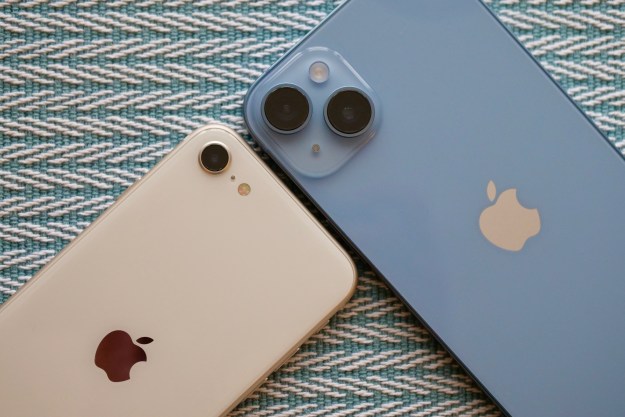ARCore is no longer tied to just Android. Google announced a few new features expanding the capabilities of its augmented reality platform at its annual Google I/O developer conference. ARCore version 1.2 makes AR social, and we played a collaborative game demonstrating how it all works.
The main attraction is what Google calls “Cloud Anchors,” which allow developers to create more collaborative AR experiences through the cloud — whether you’re on Android or iOS. Google made a demo app called Lightboard, which is a game where two people can shoot paintballs at each other to cover an area with as much color as possible.
A representative using a Pixel 2 hosted the game, and an iPhone with Lightboard installed (which we used) joined. We had to move the phone in a circular motion so it could identify the table, and then it placed a virtual platform in front of us. The game was simple, and worked liked Angry Birds. Just click and drag your gun to shoot the paintballs at the opponent’s platform to cover it in color. It all worked without a hitch, the visuals were static, and we successfully were able to play an AR game between an Android phone and an iPhone in mere seconds.
Only certain iPhones are supported, including the iPhone SE, iPhone 6S, iPhone 7, iPhone 8, and iPhone X.
Another major update is that ARCore now offers what Google calls “Vertical Plane Detection,” which means you can place virtual objects on more surfaces. In a demo, Google placed a virtual object on a painting that we could only see through an app called Augmented Images. The painting popped right out, and we were able to walk around it to see all sides of it. It’s a great addition to ARCore that makes the whole experience feel more immersive.
Other improvements to ARCore should make for a much easier development process for developers. Google released Sceneform, a new software development kit that helps Java developers implement AR scenes without needing to learn OpenGL. Sceneform is optimized for mobile, and should help developers create more, and better, ARCore apps.
There are already a ton of ARCore-based apps available. Some of the coolest apps include the likes of My Tamagotchi Forever, which allows you to care for and grow your Tamagotchi in Tamatown in an augmented reality setting. There is also Pottery Barn 3D Room View, which lets you see how furniture would look in your room without having to buy that furniture.
All these new tools are available for developers to utilize, so expect them to be major highlight for the next wave of ARCore apps, or as updated features to existing ones.
Updated on May 10: We’ve added videos demonstrating these updates, as well as hands-on impressions.
Editors' Recommendations
- Here’s how Apple could change your iPhone forever
- This Google Pixel 8a leak just spoiled everything about the phone
- Your iPhone just got a new iOS update, and you should download it right now
- No, the Journal app on your iPhone isn’t spying on you
- The top 7 bestselling phones of 2023 were all … you guessed it



